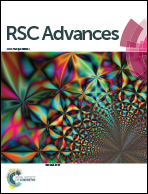Discovering new DNA gyrase inhibitors using machine learning approaches†
Abstract
Bacterial DNA gyrase is not expressed in eukaryotes. It is a promising target for broad-spectrum antibiotics. This paper reports new DNA gyrase inhibitors as broad-spectrum antibacterial agents discovered by means of target-based in silico and in vitro models. Two machine learning methods (naïve Bayesian and recursive partitioning) were employed to build in silico models based on physicochemical descriptors and structural fingerprints. For both training and testing sets, the overall predictive accuracies of the best in silico models were greater than 80%. The best 11 models were used to virtually screen a molecular database to identify DNA gyrase inhibitors. The in vitro models were used to verify the virtual hits activities against Escherichia coli, methicillin-resistant Staphylococcus aureus and other bacteria, and DNA gyrase. The MIC values of the confirmed DNA gyrase inhibitors range between 1 and 32 μg mL−1 and, the relative inhibition rates of the inhibitors range between 42% to 75% at 1 μM. Cell-based cytotoxicity assays demonstrated that the confirmed DNA gyrase inhibitors were not toxic. In silico studies indicated that the new DNA gyrase inhibitors have similar binding modes to the reported inhibitors.


 Please wait while we load your content...
Please wait while we load your content...